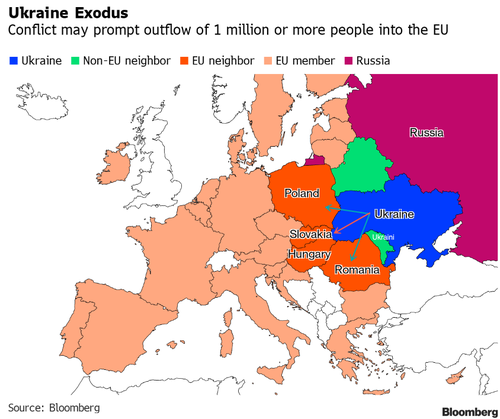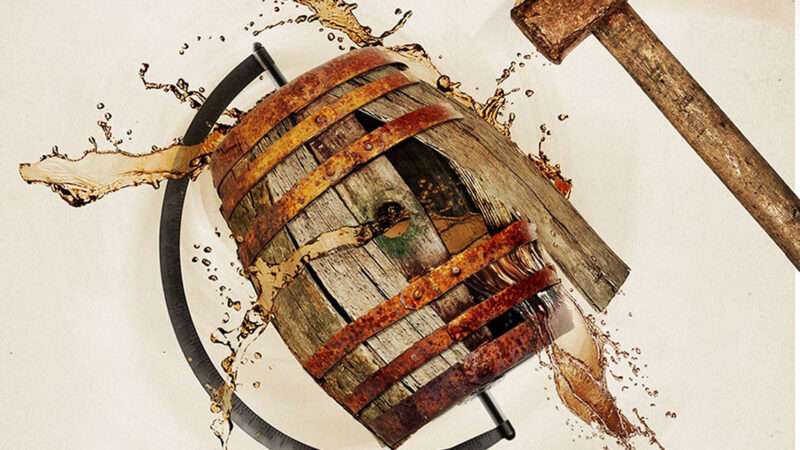Smashing the Liquor Machine: A Global History of Prohibition, by Mark Lawrence Schrad, Oxford University Press, 725 pages, $34.95
Mark Lawrence Schrad thinks Carrie Nation, the hatchet-wielding vigilante who rampaged through saloons at the beginning of the 20th century, gets a bum rap. While Nation was “easy to mock as a Bible-thumping ‘crank,’ ‘a freak,’ ‘a lunatic,’ or a ‘puritanical killjoy,'” Schrad says, she was actually a courageous and kindly woman devoted to “justice, love, and benevolence.” Her enemy “was not the drink or the drinker, but ‘the man who sells,'” Schrad, a Villanova political scientist, writes in Smashing the Liquor Machine: A Global History of Prohibition. “This is important.”
I’m not sure that distinction, which underpins Schrad’s broader effort to redeem the reputation of alcohol prohibitionists, is as important as he thinks. I’m not even sure it makes sense. Without drinkers, after all, there would be no brewers, vintners, distillers, liquor merchants, or tavern keepers. In Schrad’s telling, the customer is not king; he is barely a serf.
Schrad’s defense of prohibition depends on the notion that people have no real control over whether or how much they drink. Schrad, who confesses to a fondness for Manhattans but nevertheless seems to have avoided a disastrous descent into alcoholism, surely knows that is not true. Yet without that fiction, his distinction between “the drinker” and “the man who sells” dissolves like the sugar in a well-mixed old fashioned.
Schrad’s exhaustive study, the product of prodigious and groundbreaking research, nevertheless complicates the conventional understanding of alcohol prohibition, which sees it as a distinctly American and reactionary phenomenon. According to this view, Schrad says, the movement to ban alcohol was “the last-gasp backlash of conservative, rural, native-born Protestants against the rising tide of urbanization, immigration and multiculturalism in turn-of-the-century America.” To the contrary, he shows, the movement spanned the globe, often pitting “subaltern” groups against elites and native leaders against colonizers. “Prohibitionism,” Schrad writes, “wasn’t moralizing ‘thou shalt nots,’ but a progressive shield for marginalized, suffering, and oppressed peoples to defend themselves from further exploitation.”
Even as he strives to correct caricatures of prohibitionists, Schrad indulges in sweeping stereotypes of liquor vendors, whom he reflexively describes as “unscrupulous” or “predatory.” The liquor joints of the time, he emphasizes, were nothing like Sam Malone’s “cozy, respectable” bar on Cheers, “where everybody knows your name” and the proprietor is “like a therapist or best friend” who makes sure his customers get home safely when they overimbibe.
The man in charge of the village kabak in 19th century Russia, in contrast, was a “shyster” who “became the primary interface between the peasant and the predatory state,” which had a monopoly on vodka production. “By oath,” Schrad writes, “he could never refuse even a habitual drunkard, lest the tsar’s revenue be diminished.” He would gladly continue serving customers until their pockets were empty, forcing them to exchange their clothes for more before ejecting them to die naked in the cold. The Russian state was so dependent on alcohol revenue that in 1859 it brutally suppressed a “temperance revolt” in Spassk; elsewhere, soldiers literally forced vodka down the throats of recalcitrant peasants.
While these are extreme examples, Schrad’s general thesis is that liquor suppliers across the world were guilty of outrageous abuses that explain the prohibitionist response. No doubt that was true in many cases. But Schrad’s unremittingly negative portrait of the industry makes you wonder: Was there no such thing as an honest liquor merchant or a happy customer? Did saloons offer nothing but misery and corruption?
Schrad is so intent on painting alcohol sellers as villains that he is driven to contradiction. He faults them for selling high-proof products, which he views as especially addictive. But he also faults them for watering down their drinks, which by his logic should have made their wares less dangerous. He criticizes them for low prices, which encouraged overconsumption, but also for high prices, which drove heavy drinkers further into poverty. And government liquor monopolies are alternately bad or good, depending on who is in charge: avaricious autocrats in Russia or enlightened regulators in Sweden.
The medical and social harms of alcoholism that Schrad describes are beyond dispute. The question is whether those costs justify criminalizing peaceful transactions between consenting adults. Here is where Schrad’s line between drinkers and “the liquor machine” becomes hazy.
The relevance of the choices made by individual drinkers is hard to miss in Schrad’s account of protests by Mohandas Gandhi’s followers at Indian liquor stores, which his campaign of “nonviolent noncooperation” targeted because they generated revenue for the British Raj. “Not only would nationalists boycott liquor themselves, they would actively scare away would-be drinkers from the government stores,” Schrad explains. “While not preventing entry by force, one of the (usually) seven or eight picketers would verbally harass would-be customers, sometimes hurling ‘very filthy language.'” If the customers nevertheless completed their purchases, they faced even worse abuse on their way out.
Gandhi was appalled when these protests descended into murderous violence. But even the initial tactics make it clear that the anti-liquor activists were angry at drinkers as well as the businesses that supplied them. And Gandhi’s endorsement of legal prohibition, which necessarily involves the use of force, is hard to reconcile with a commitment to peace and tolerance.
Schrad nevertheless insists that prohibitionists did not oppose “the individual’s right to drink.” Rather, they opposed “profit-making from trafficking in addictive substances.” Let us consider that distinction in the U.S. context.
Unlike our current drug laws, the 18th Amendment and the Volstead Act did not prohibit the mere possession or consumption of the substance they targeted. But they did ban the “manufacture” as well as the “sale” and “transportation” of “intoxicating liquors.” That ruled out home brewing, wine making, and distilling, except for religious or medicinal purposes. So even drinkers who had the supplies, equipment, and know-how to make their own alcoholic beverages faced punishment if they got caught doing it. That point aside, the prohibition of commercial production and distribution obviously had a big, intentional impact on Americans’ ability to legally exercise “the individual’s right to drink.”
The black market created by that policy did not ameliorate the iffy quality and official corruption that Schrad ties to the legal alcohol industry. It made those problems worse, while also fostering violence, boosting organized crime, and undermining civil liberties. Nor did Prohibition unambiguously deter excessive drinking: It pushed suppliers toward more potent products that were easier to smuggle, and it drove consumption underground, weakening the social forces that encourage moderation. Such effects persuaded many Americans who initially supported Prohibition that the “noble experiment” had failed.
Despite Schrad’s avowed empathy for the common man, he has little patience with the indignant drinker who thinks his choice of recreation is no one’s business but his own. Schrad takes it for granted that political leaders should be free to choose whatever policies they think will promote the public welfare.
As Schrad notes, the British philosopher John Stuart Mill generally championed the same “great reforms” as illustrious prohibitionists such as Frederick Douglass, including abolition, universal suffrage, and equal rights for women. But Mill parted company with Douglass et al. when it came to restricting alcoholic beverages. “Prohibition of their sale is in fact, as it is intended to be, prohibition of their use,” Mill wrote. “The infringement complained of is not on the liberty of the seller, but on that of the buyer and consumer.”
Schrad rejects Mill’s “right-to-drink argument” because it “effectively exonerated the liquor trafficker’s predations; the man who sells simply disappears from the equation.” In Schrad’s formulation, by contrast, the drinker disappears from the equation, since seemingly voluntary transactions are redefined as “predations.”
If your concept of liberty includes the right to acquire and exchange property, of course, you might have a different objection to Mill’s take: Why not defend “the liberty of the seller,” as long as he is honest and the buyer is willing? Schrad draws a distinction between “political rights,” which he says are based on “Enlightenment principles,” and “economic liberties,” which evidently are not. But this line is at least as fuzzy as the one between the drinker and “the man who sells.”
Schrad’s political rights include religious liberty and freedom of the press. It is hard to exercise those rights without economic liberties such as the right to buy land for a church or the right to buy tools of communication. And if people don’t have a right to the fruits of their labor, meaning their livelihoods depend on the state’s discretion or largesse, all their other rights are insecure.
Schrad calls prohibition “part of a long-term people’s movement to strengthen international norms in defense of human rights, human dignity, and human equality, against traditional autocratic exploitation.” But if human rights don’t include economic liberties, traditional autocratic exploitation can easily be replaced by equally oppressive forms of tyranny.
The post The Fuzzy Moral Line Between Drinkers and Bartenders appeared first on Reason.com.
from Latest https://ift.tt/OXL1Ju2
via IFTTT








